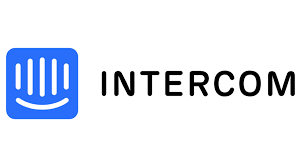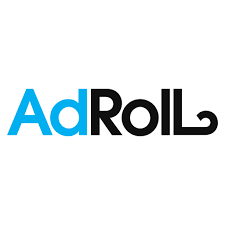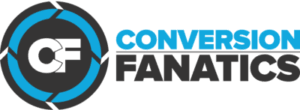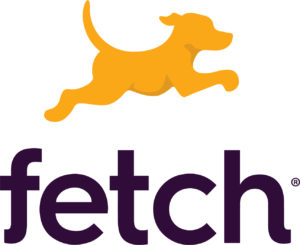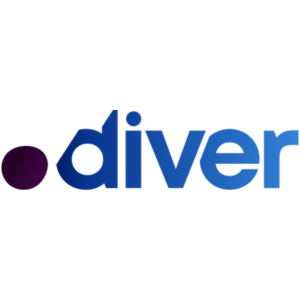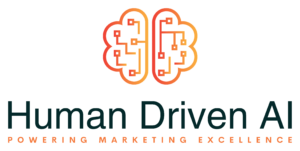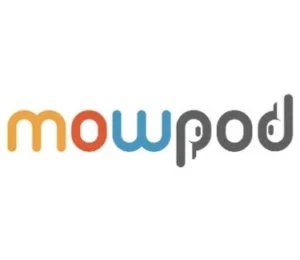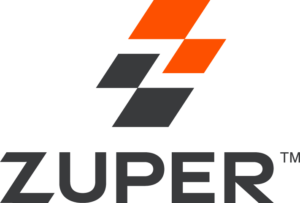LISTEN IN A POD APP
Filters
Nataly Kelly | Take Your Company Global
Choosing the best digital strategy for international business — Nataly Kelly // Take Your Company Global
Nataly Kelly, Author of Take Your Company Global, explores international digital marketing strategies. Understanding the best digital strategy for international expansion requires a nuanced approach. It's not just about assuming global platforms work uniformly in every country, and it goes beyond translating all the content on your website into the new market’s language. Today, Nataly…
Play PodcastNataly Kelly | Take Your Company Global
Why you need a Market Intensification strategy — Nataly Kelly // Take Your Company Global
Nataly Kelly, Author of Take Your Company Global, explores international digital marketing strategies. In the digital age, expanding into global markets has become more accessible for companies. However, unlike the past, today's approach requires an incremental process to expand your presence in a new market, making a market intensification strategy crucial. Today, Nataly discusses why…
Play PodcastPhil Gamache | Humans of Martech podcast
Meet the Humans of MarTech — Phil Gamache // Humans of Martech podcast
Phil Gamache, Co-Founder of the Humans of Martech podcast, explores the future of martech. While marketing has become increasingly data-driven and technologically advanced, it's important not to lose sight of the human and creative aspects. The Humans of Martech podcast aims to maintain a balance by highlighting the human and creative aspects of marketing alongside…
Play PodcastVishal Sood | Typeface
What level of content personalization can we expect? — Vishal Sood // Typeface
Vishal Sood, Head of Product at Typeface, explores the debate between automation and creativity and dissects the significance of each in marketing. In the ever-changing world of content, it's crucial to identify what truly connects with your audience and leverage it across different channels. Yet, personalizing content for each channel, audience group, and geographical location…
Play PodcastVishal Sood | Typeface
Automation vs creativity: What is more important? — Vishal Sood // Typeface
Vishal Sood, Head of Product at Typeface, explores the debate between automation and creativity and dissects the significance of each in marketing. Creative thinking is what generates innovative ideas, connects emotionally with the audience, and builds a brand's identity. While there is a fear that automation may eventually replace the creative elements of marketing, automation…
Play PodcastMelissa Sargeant | AlphaSense
The evolution of market intelligence platforms — Melissa Sargeant // AlphaSense
Melissa Sargeant, CMO at AlphaSense, delves into marketing functions, company growth, and the evolutions of marketing intelligence. In the past, gathering market intelligence was a manual and time-consuming process that was prone to oversight. However, modern marketing intelligence platforms bring together data from internal and external sources providing a more holistic view of the market…
Play PodcastShay Howe | ActiveCampaign
Why unique data sets are the AI competitive advantage of the future — Shay Howe // ActiveCampaign
Shay Howe, CMO of ActiveCampaign, explores the power of owned media assets and unique data. A large dataset encompassing user activities on your website and their online interactions across your owned channels is a valuable resource. When harnessing the power of this data, AI plays a pivotal role in facilitating personalization, decision-making, and overall marketing…
Play PodcastDenise Persson | Snowflake
The impact of generative AI on marketing — Denise Persson // Snowflake
Denise Persson, Chief Marketing Officer at Snowflake, explores Snowflake’s Modern Marketing Data Stack and the importance of artificial intelligence. In the face of tightening marketing budgets, AI is shaping up to be a crucial ally for marketers. Marketers today operate more efficiently and extract maximum value from each dollar invested, and AI is well-suited to…
Play PodcastDenise Persson | Snowflake
The Modern Marketing Data Stack report — Denise Persson // Snowflake
Denise Persson, Chief Marketing Officer at Snowflake, explores Snowflake’s Modern Marketing Data Stack and the importance of artificial intelligence. Over the past six months, there has been a notable increase in the adoption of AI and machine learning applications. While this is putting pressure on marketers to formulate AI strategies for their organizations, an effective…
Play PodcastAytekin Tank | Jotform
The process of automating your busywork — Aytekin Tank // Jotform
Aytekin Tank, Founder and CEO of Jotform, explores automation and martech tools. By automating routine tasks, marketers can allocate more of their time and cognitive resources to the most important things. However, marketers must first determine which tasks they should be spending time on vs. the tasks they shouldn’t. Today, Aytekin discusses the process of…
Play PodcastAbout Business Type: SAAS
What is Software-as-a-Service (SaaS)?
Software-as-a-Service (SaaS) is a widely-used form of cloud application and cloud computing software where one or more service providers host applications online for customers to access. Service providers remotely deliver software to its consumers in a subscription pay-for-use-basis or one-to-many model with all contracted SaaS customers.
SaaS providers help small and enterprise companies by handling installation, software upgrades and software management tasks. It saves valuable time for multiple teams within an organization who can prioritize critical business initiatives.
SaaS applications vary in scope, definition and purpose. The most popular examples of SaaS models, cloud computing and applications include:
- Google Mail (Gmail) and Google Apps.
- Salesforce, which is primarily known for its customer relationship management (CRM) software.
- Expensify.
- MailChimp.
- Zendesk.
- Hubspot.
- Dropbox.
- Microsoft Office 365.
SaaS is just one of three types of cloud services. The other two definitions are:
- Infrastructure-as-a-service (IaaS) - When an enterprise leases or rents servers to compute and storage data in the cloud. Users can utilize any operating system or application on rented servers without incurring operating costs.
Users benefit from IaaS as users can test new applications on IaaS providers without requiring the right infrastructure for said test. Remote data storage allows for application access and recovery during outages or natural disasters. IaaS allows for faster scaling and empowers businesses to prioritize core business activities instead of IT computing applications and resources.
- Platform-as-a-service (PaaS) - PaaS delivers frameworks developers work with to create custom applications. A third-party provider or enterprise PaaS manages servers, storage and networking. Developers manage the applications. The platform aspect is delivered over the internet, which gives developers freedom to build software without operating system concerns.
PaaS is easily scalable, cost-effective and boasts an easy migration to hybrid model. Developers are able to focus solely on app customizations without software management constraints.
Key SaaS Features
- Multi-tenant features and multitenant architecture
- Rate limiting/QoS
- Data security
- Subscription-based billing
- Automated provisioning
- Single sign-on
SaaS Advantages
- Low startup costs - A benefit to SaaS is most applications are subscription-based, which typically costs less than licensing fees one would encounter with traditional software.
It's highly beneficial for small businesses who rely on web-based software to provide the technical infrastructure and capabilities they lack. Most SaaS solutions are transparent with upfront costs and their subscription fees are reasonable.
- Eases technical burdens - Since SaaS' delivery model uses the internet to provide service, it alleviates technical and hardware requirements for most businesses. Companies are freed from most self-service and browser requirements.
Businesses simply need a strong internet connection, and web browser in some cases, to access SaaS tools. SaaS products also make it easy to access interfaces from desktop and mobile devices. SaaS vendor's in-house IT teams manage all technical issues that occur, relieving IT responsibilities from end users.
- SaaS company's hold more accountability - SaaS company's subscription models make it easy for customers to cancel subscriptions. The burden lies with SaaS companies to provide top-tier customer experiences in a highly-competitive space.
Application service providers must guarantee cloud security, billing flexibility, ongoing support and eliminate redundancy to keep customers engaged.
- Easy to use - SaaS offerings allow for greater access and use across devices and regions. SaaS companies place a high priority on user experience, ensuring software is easy to adopt and integrate within a business.
SaaS Limitations
SaaS applications are not without their downsides. Although they empower multiple teams within organizations, they possess some limitations.
- Interoperability is difficult - Most SaaS apps interact with other major SaaS providers, but some apps lack the standards for full integration. Organizations often need to design their own integration systems, which can quickly become convoluted.
- Lack of customization - No one-size-fits-all approach exists for SaaS apps that offer minimal customization options. Users are often confined to the functionality and integrations offered by the vendor, unless it's an on-premise solution that provides software development kits.
- Data can be vulnerable during transfers - SaaS handles and processes large amounts of customer data, including customer finances, transactions, sales information and more. Data is often exchanged with backend SaaS apps data centers to process large packets of data.
Transferring sensitive data to public-cloud based SaaS business applications are highly susceptible to security breaches. Traditional software can guarantee more security due to its localized nature.
- Service agreements and software licenses are strict - It's easy to join a SaaS service, but it's much more difficult to leave once you've signed a service contract. SaaS services make it difficult for data to be portable-technically, or cost-effective with other apps.
Additional vendor fees are charged for attempting to bridge systems, and some vendor policies exclusively forbid it in their service agreements.
- Service outages hinder business operations - Since the SaaS company completely manages and controls SaaS applications, customers entirely rely on the vendor for service security and performance. Outages, cyber-attacks and network issues lead to system downtimes, which impacts business operations.
Web browser access could also be affected by internet outages, which hinders access even if cloud services aren't impacted. Although some SaaS features can function offline they still need to sync and update new information with the server.
SaaS Sales and Marketing
SaaS companies rely on attracting a steady influx of customers to try, and subscribe to, their software. SaaS businesses need to acquire buyers quickly as their growth rates must exceed 20% on a yearly basis to survive.
Marketing is unique in the SaaS industry compared to others based on key differences:
- SaaS promotes an intangible product - SaaS hardware is primarily cloud-based, and is something consumers can't physically hold or observe. Marketing efforts depend on communicating how a product works and how it solves consumer problems.
- SaaS operates with a different sales model - In SaaS service trials, a customer goes through a trial on their own. They typically only engage with sales teams in the last phase of the trial. Enterprise trial cycles can last months, if not longer, before a customer is satisfied enough to sign a service level agreement.
SaaS companies prioritize the following objectives in their marketing strategies:
- Attracting the right customer - SaaS companies need to engage and connect with potential users to attract them to their sites. Potential customers should already experience specific problems that your product aims to, or actually, solve.
- Nurture relationships with leads - Software vendors are responsible for nurturing leads. Successful SaaS marketing strategies apply a combination of thought leadership content and channel marketing initiatives to convince leads to try their products.
- Removing sign-up roadblocks and obstacles - SaaS marketers optimize conversions around website goals. Straightforward delivery models are key to ensuring consumers can sign-up quickly and effortlessly sign software licensing agreements.
- Engaging users at every stage of the buyer's journey - Most SaaS applications provide free demos and trials for interested users. It's a marketer's responsibility to engage with the consumer at every stage of the consumer's journey. Marketers often tweak free trials to suit a potential buyer's unique needs, providing access to new features, software tools or SaaS integrations to gain a conversion.
- Provide a lifetime value for customers - Most SaaS models operate on user subscriptions. SaaS marketing strategies focus on increasing customer lifetime value to eliminate churn and move customers to purchase higher-priced plans.
SaaS Marketing in Practice
Enterprise-level SaaS companies focus on high-performing channels to help spark growth in their marketing strategies.
- Inbound Marketing - Content is key to driving strangers to your site to convert them into new customers. Blog posts, social media, whitepapers and other content types help draw new visitors.
- Sear Engine Optimization - SEO is a vital organic growth strategy that positions your site as reputable and trustworthy. Marketers apply SEO as a critical component in their marketing strategies.
- Online Advertising - Paid ads from PPC campaigns, social media ads and banner advertising help drive users to lead generating assets or trial landing pages.
- App Stores and Other Affiliates - SaaS solutions rely on app marketplaces like Apple Appstore, Intuit or Google Pay to promote their offerings.
Read MoreRead Less
Sponsors of the MarTech Podcast




